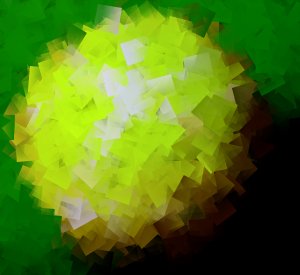Abstracts
 Yuri Bilu
Yuri BiluAddition of finite sets and Freiman's theorem
I will speak on Freiman's orginal proof of his fundamental theorem on addition of finite sets, concentrating mainly on the qualitative aspects. If time permits, I will also touch quantitative aspects and outline Ruzsa's proof.
Farrell BrumleyEffective distribution on homogeneous spaces and applications
This course will review various foundational results in the theory of equidistribution of orbits on homogeneous spaces. For the most part, we will limit ourselves to the the simplest case of finite volume quotients of SL(2,R). Our emphasis will be on effective methods for arithmetic quotients, where the presence of extra symmetries coming from Hecke correspondences allows one to quantify rates of equidistribution. (For completeness and for the sake of comparison, we will at times present qualitative arguments that work for generic lattices.) One of the first results we will encounter will be the equidistribution of closed horocycles. We shall discuss the relationship of this problem to the mixing properties of the geodesic flow. As application to these ideas, we will present the argument of Eskin-McMullen using mixing to count lattice points in the upper-half plane. The course will culminate with Venkatesh's ergodic proof of subconvex bounds on periods of GL(2) automorphic forms.
Manfred EinsiedlerEffective equidistribution of closed orbits
We will discuss cases of how spectral gap results for group actions and equidistribution results on homogeneous spaces X = Γ / G relate to each other:
- Effective decay of matrix coefficients for SL(3,R)
- Effective decay of matrix coefficients for the geodesic flow implies effective equidistribution of horocycle orbits
- Ineffective measure classification for measures invariant under a semisimple group
- Outline of property (τ) implies effective equidistribution of closed orbits
- Outline of a proof of property (τ) for simple groups of absolute rank at least 2
Dynamics on G/ Γ and Diophantine geometry
We will discuss in the problems of counting and distribution of rational/integral solutions of polynomial equations. In the case when the set of solutions is parametrised by a group action, these problems can be approached using harmonic analysis and the theory of dynamical systems (Ratner theory of unipotent flows).
Harald Andrés HelfgottGrowth and expansion in linear algebraic groups
Let A be a subset of a finite group G. If G is abelian, the set A· A = {x· y: x,y ∈ A} can be or can fail to be much larger than A the study of these two possibilities is a central classical question in additive combinatorics. What happens if G is not abelian? This question turns out to have strong connections with the notion of expander graphs. At the same time, it can be addressed by means of mainly elementary techniques, with a modicum of algebraic geometry. We will also study applications to random walks and the affine sieve.
Martin KassabovKazhdan property T and its applications
In this mini course I will introduce Kazhdan property T and some of its variations. Although this property comes from representation theory, usually proving that a groups has property T uses only a few simple representation theory lemmas and the rest consists of either geometric algebraic/combinatorial arguments.
Philippe MichelAutomorphic periods and L-functions
The possibility of studying L-functions and their analytic properties result to a large extend from the fact that L-function may be realized as ``periods'', that is integrals of suitable functions along a suitable subvariety of an ambient variety (in fact an homogeneous variety: the quotient of a linear (adelic) group by a discrete (arithmetic) subgroup). In these lectures we present several instances of such realizations and explain how one deduces out of them and from the theory of automorphic forms some important analytic informations regarding L-functions (such as subconvex bounds) and we will describe other interesting consequences.
Ritabrata MunshiThe subconvexity problem
The subconvexity problem is about obtaining an upper bound for L-functions inside the critical strip in terms of the respective conductor C(t). The functional equation, together with the Phragmen-Lindelof principle of complex analysis, gives the bound C(t)^(1/4) which we call the convexity (or the trivial) bound. The generalized Lindelof hypothesis (which is a consequence of the generalized Riemann hypothesis) predicts that the exponent can be taken to be any positive number, however small. Proving GLH remains far beyond the available techniques. In fact with the present day technology we are only able to break the convexity bound for GL(1), GL(2) and GL(2)× GL(2) (and some other very special cases of) L-functions. The focus of this course will be to give detailed report of the subconvexity bounds presently known (since the time of Weyl's paper of 1921). We will also discuss in detail what goes inside the proofs.
Dipendra PrasadPeriod integrals, central L-values, and branching laws
Relationship between period integrals and central L-values has been of considerable interest starting from the work of Waldspurger. We review various instances in which one either has a known relationship of this kind, or has a conjectured relationship.
Nimish ShahUnipotent flows on homogeneous spaces and number theoretic applications
We will indicate some of the main technical ideas involved in the proofs of (i) the Oppenheim conjecture due to G. A. Margulis and (ii) special cases of Ratner's theorems on unipotent flows. We will explain the linearization technique, and show how to use properties of unipotent flows to prove various number theoretic problems like counting lattice points on orbits of groups on vectors spaces, metric properties of Diophantine approximation, etc.